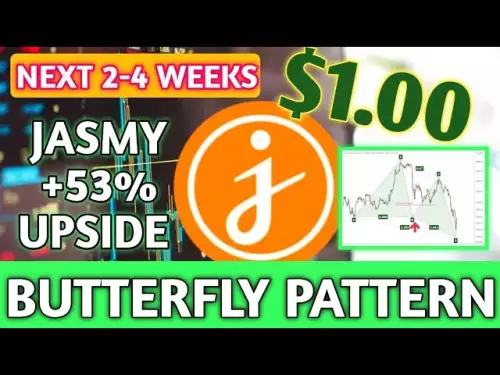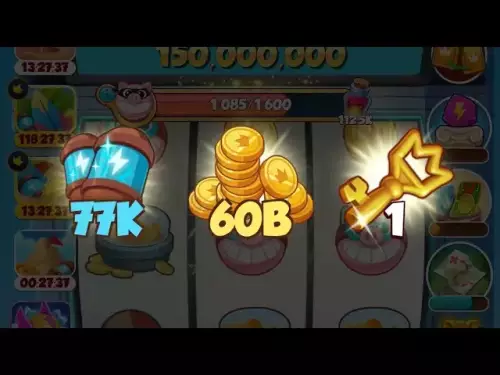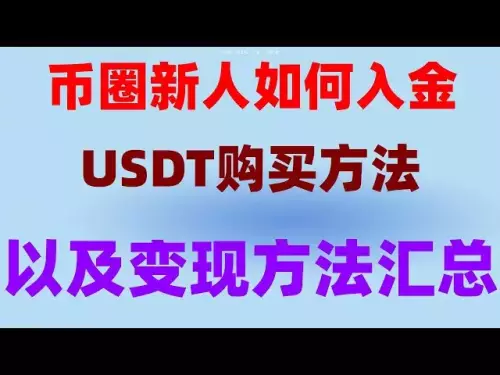-
 Bitcoin
Bitcoin $110400
-2.58% -
 Ethereum
Ethereum $4406
-7.45% -
 XRP
XRP $2.866
-5.19% -
 Tether USDt
Tether USDt $1.000
0.03% -
 BNB
BNB $845.1
-3.47% -
 Solana
Solana $188.1
-7.62% -
 USDC
USDC $0.0000
0.00% -
 TRON
TRON $0.3443
-4.76% -
 Dogecoin
Dogecoin $0.2097
-8.88% -
 Cardano
Cardano $0.8405
-7.45% -
 Chainlink
Chainlink $23.52
-9.19% -
 Hyperliquid
Hyperliquid $43.48
-5.35% -
 Ethena USDe
Ethena USDe $1.001
0.02% -
 Stellar
Stellar $0.3836
-6.11% -
 Sui
Sui $3.353
-8.52% -
 Bitcoin Cash
Bitcoin Cash $543.9
-7.28% -
 Avalanche
Avalanche $23.43
-8.32% -
 Hedera
Hedera $0.2306
-7.24% -
 UNUS SED LEO
UNUS SED LEO $9.573
-0.27% -
 Litecoin
Litecoin $108.7
-8.06% -
 Toncoin
Toncoin $3.133
-5.16% -
 Shiba Inu
Shiba Inu $0.00001204
-6.94% -
 Uniswap
Uniswap $9.749
-10.56% -
 Polkadot
Polkadot $3.755
-8.33% -
 Dai
Dai $1.000
-0.02% -
 Cronos
Cronos $0.1550
-0.65% -
 Bitget Token
Bitget Token $4.502
-3.42% -
 Monero
Monero $266.2
-3.14% -
 Aave
Aave $315.9
-8.85% -
 Ethena
Ethena $0.6253
-9.73%
How can traders use VWAP to avoid making panic-selling decisions?
VWAP acts as a psychological anchor in crypto trading, helping traders gauge fair value, avoid emotional decisions, and identify high-probability entry and exit points when combined with volume and other indicators.
Aug 06, 2025 at 03:14 pm
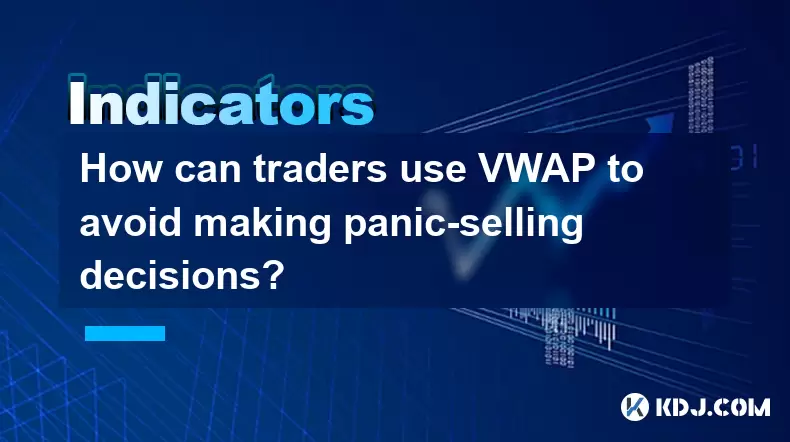
Understanding VWAP and Its Role in Market Psychology
The Volume Weighted Average Price (VWAP) is a trading benchmark that gives traders insight into both price and volume over a specific time period. It represents the average price a cryptocurrency has traded at throughout the day, based on both volume and price. Because VWAP accounts for both metrics, it offers a more accurate depiction of market sentiment than a simple moving average. For traders, understanding VWAP as a psychological anchor is crucial. When prices deviate significantly from VWAP, emotions such as fear or greed can trigger impulsive decisions. By referencing VWAP, traders can assess whether a price move is supported by volume or if it’s an outlier driven by short-term volatility.
When the current price is above VWAP, it generally indicates bullish momentum supported by strong buying volume. Conversely, when the price is below VWAP, it may suggest selling pressure. Recognizing these conditions helps traders avoid reacting emotionally to sudden price drops. Instead of interpreting a dip as a signal to sell, they can analyze whether the drop is occurring on low volume or if it’s a temporary deviation from the average. This contextual analysis reduces the likelihood of panic-selling during normal market fluctuations.
Using VWAP to Identify Fair Value and Mean Reversion
One of the most effective ways traders use VWAP is to identify fair market value. In cryptocurrency markets, which are known for high volatility, prices can swing dramatically within minutes. These swings often pull traders into emotional decision-making. However, VWAP acts as a dynamic equilibrium point. When the price moves far from VWAP without significant volume backing, it may indicate an overreaction.
Traders can use this principle to avoid panic by asking: Is this price movement justified by volume? If the price drops sharply but volume remains low, the move may lack conviction. In such cases, the price is likely to revert toward VWAP. This concept of mean reversion allows traders to stay calm during sudden sell-offs, knowing that the market may naturally correct itself. Setting alerts near key VWAP levels enables traders to monitor deviations without constant screen time, reducing stress and emotional interference.
Setting Strategic Entry and Exit Points with VWAP
Instead of reacting impulsively to price changes, traders can use VWAP to define structured entry and exit strategies. For example, a common tactic is to avoid selling when the price is near or above VWAP unless other technical indicators confirm a reversal. This prevents premature exits during temporary dips. Similarly, traders might set sell orders only when the price significantly exceeds VWAP with diminishing volume, signaling potential exhaustion.
To implement this:
- Monitor the real-time relationship between price and VWAP on a 5-minute or 15-minute chart.
- Use VWAP bands (standard deviations above and below VWAP) to identify overbought or oversold conditions.
- Avoid placing market sell orders during rapid declines unless the price breaks below VWAP with high volume and closes below it consistently.
- Consider scaling out of positions gradually when the price moves favorably away from VWAP, locking in profits without exiting entirely.
This methodical approach ensures decisions are based on data, not emotion. By predefining rules tied to VWAP behavior, traders remove the need for split-second judgments during volatile moments.
Combining VWAP with Other Indicators for Confirmation
Relying solely on VWAP can be misleading, especially in choppy or low-volume markets. To enhance reliability, traders combine VWAP with complementary tools. For instance, pairing VWAP with the Relative Strength Index (RSI) helps confirm whether a price drop is due to overbought conditions correcting or a genuine bearish trend emerging.
Consider the following integration:
- When the price falls below VWAP and RSI shows oversold levels (below 30), it may signal a temporary dip rather than a sustained downtrend.
- Use volume profile to see if the current price is trading in a high-volume node, which adds credibility to the VWAP reading.
- Overlay moving averages (like the 20-period EMA) to detect alignment with VWAP; confluence increases the strength of the signal.
These combinations create a multi-layered analysis framework. When multiple indicators align, the trader gains confidence in their assessment, reducing the urge to panic-sell based on a single data point.
Using VWAP in Different Trading Timeframes
VWAP is most commonly calculated on an intraday basis, but its application varies across timeframes. Day traders often reset VWAP at the start of each session to capture daily volume patterns. In contrast, swing traders may use cumulative VWAP over several days to identify longer-term fair value. Understanding which version to use is key to avoiding emotional decisions.
For intraday traders:
- Reset VWAP at the beginning of the trading session (e.g., UTC 00:00 for crypto markets).
- Watch for price rejections at VWAP as potential reversal zones.
- Avoid closing long positions simply because price touches VWAP from above unless momentum shifts.
For position traders:
- Apply multi-day VWAP to filter out noise from short-term volatility.
- Use extended VWAP trends to determine whether the market is in a bullish or bearish phase.
- Refrain from panic-selling during minor corrections if the price remains above the longer-term VWAP.
Tailoring VWAP usage to the trading style ensures consistency and reduces emotional interference.
Automating VWAP-Based Alerts to Reduce Emotional Trading
Emotions often arise from uncertainty and lack of preparedness. Traders can mitigate this by setting up automated alerts based on VWAP deviations. Most trading platforms, including TradingView and Binance Futures, allow custom alerts when price crosses VWAP or moves beyond a certain percentage from it.
Steps to set up VWAP alerts:
- Open your charting platform and add the VWAP indicator.
- Right-click on VWAP and select “Create Alert.”
- Define conditions such as “Price crosses below VWAP” or “Price is 2% below VWAP.”
- Choose notification method (email, pop-up, or mobile push).
- Optionally, link the alert to a script that checks volume or RSI for additional filtering.
These alerts act as objective checkpoints. Instead of constantly watching the market, traders receive notifications only when predefined conditions are met, allowing them to respond calmly and deliberately.
Frequently Asked Questions
Can VWAP be used in sideways or ranging cryptocurrency markets?
Yes, VWAP remains useful in ranging markets. During consolidation, price often oscillates around VWAP, making it a central pivot point. Traders can use it to identify potential reversal zones—buying near VWAP in an uptrend within the range and selling when price approaches resistance above VWAP.
Does VWAP work the same way across all cryptocurrencies?
VWAP functions identically in calculation across all assets, but its effectiveness depends on trading volume and market depth. It is more reliable in high-volume coins like Bitcoin or Ethereum than in low-cap altcoins, where price can be easily manipulated.
Why does price sometimes keep falling even after dropping below VWAP?
A drop below VWAP with sustained high volume may indicate strong bearish conviction. VWAP is a lagging indicator; it reflects past activity. If new selling pressure emerges, price can continue downward despite being below VWAP. Always assess volume and broader market context.
Is it safe to buy when price is below VWAP?
Not automatically. While price below VWAP can suggest undervaluation, it’s essential to confirm with volume and trend analysis. A low-volume dip may reverse, but a high-volume breakdown could signal further downside. Use VWAP as part of a broader strategy, not a standalone signal.
Disclaimer:info@kdj.com
The information provided is not trading advice. kdj.com does not assume any responsibility for any investments made based on the information provided in this article. Cryptocurrencies are highly volatile and it is highly recommended that you invest with caution after thorough research!
If you believe that the content used on this website infringes your copyright, please contact us immediately (info@kdj.com) and we will delete it promptly.
- Heritage Distilling's Token Deal: A Bold Balance Sheet Strategy
- 2025-08-26 06:45:14
- Coinbase Hack, Solana Shenanigans, and Wallet Woes: What's a Crypto OG to Do?
- 2025-08-26 06:45:14
- Bitcoin Price, Cardano, Layer Brett: What's the Haps?
- 2025-08-26 05:30:13
- UAE's Bitcoin Bonanza: From Mining Hub to Crypto Powerhouse
- 2025-08-26 06:10:13
- Ethereum, Liquidations, and Bitcoin: A Crypto Market Rollercoaster
- 2025-08-26 05:45:13
- Ethereum Whale Dumps $25M ETH: Panic Sell or Strategic Move?
- 2025-08-26 05:50:12
Related knowledge
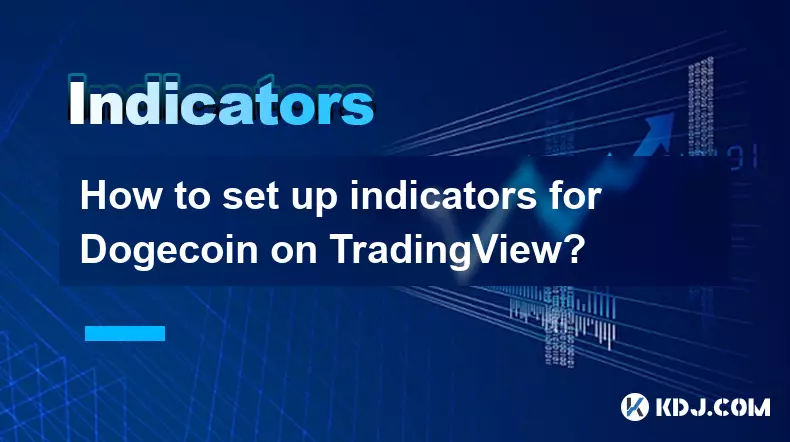
How to set up indicators for Dogecoin on TradingView?
Aug 25,2025 at 04:23pm
Understanding Dogecoin and TradingView1. Dogecoin, initially created as a meme-based cryptocurrency, has evolved into a widely traded digital asset. I...

What does it mean when the +DI and -DI cross frequently in the DMI indicator but the ADX is flattening?
Aug 11,2025 at 03:15am
Understanding the DMI Indicator ComponentsThe Directional Movement Index (DMI) is a technical analysis tool composed of three lines: the +DI (Positive...

What does the sudden appearance of a "dark cloud cover" candlestick pattern during an uptrend indicate?
Aug 13,2025 at 11:35am
Understanding the 'Dark Cloud Cover' Candlestick PatternThe dark cloud cover is a bearish reversal pattern in technical analysis that typically appear...

What does it mean when the moving average, MACD, and RSI all send buy signals simultaneously?
Aug 11,2025 at 01:42pm
Understanding the Convergence of Technical IndicatorsWhen the moving average, MACD, and RSI all generate buy signals at the same time, traders interpr...

What does it mean when both the KDJ indicator and the RSI show overbought signals simultaneously?
Aug 13,2025 at 11:35am
Understanding the KDJ Indicator in Cryptocurrency TradingThe KDJ indicator is a momentum oscillator derived from the Stochastic Oscillator, widely use...

What does it mean when the price is trading above the SAR indicator but the red dots are densely packed?
Aug 09,2025 at 11:49pm
Understanding the SAR Indicator and Its Visual SignalsThe SAR (Parabolic Stop and Reverse) indicator is a technical analysis tool used primarily to de...

How to set up indicators for Dogecoin on TradingView?
Aug 25,2025 at 04:23pm
Understanding Dogecoin and TradingView1. Dogecoin, initially created as a meme-based cryptocurrency, has evolved into a widely traded digital asset. I...

What does it mean when the +DI and -DI cross frequently in the DMI indicator but the ADX is flattening?
Aug 11,2025 at 03:15am
Understanding the DMI Indicator ComponentsThe Directional Movement Index (DMI) is a technical analysis tool composed of three lines: the +DI (Positive...

What does the sudden appearance of a "dark cloud cover" candlestick pattern during an uptrend indicate?
Aug 13,2025 at 11:35am
Understanding the 'Dark Cloud Cover' Candlestick PatternThe dark cloud cover is a bearish reversal pattern in technical analysis that typically appear...

What does it mean when the moving average, MACD, and RSI all send buy signals simultaneously?
Aug 11,2025 at 01:42pm
Understanding the Convergence of Technical IndicatorsWhen the moving average, MACD, and RSI all generate buy signals at the same time, traders interpr...

What does it mean when both the KDJ indicator and the RSI show overbought signals simultaneously?
Aug 13,2025 at 11:35am
Understanding the KDJ Indicator in Cryptocurrency TradingThe KDJ indicator is a momentum oscillator derived from the Stochastic Oscillator, widely use...

What does it mean when the price is trading above the SAR indicator but the red dots are densely packed?
Aug 09,2025 at 11:49pm
Understanding the SAR Indicator and Its Visual SignalsThe SAR (Parabolic Stop and Reverse) indicator is a technical analysis tool used primarily to de...
See all articles





















